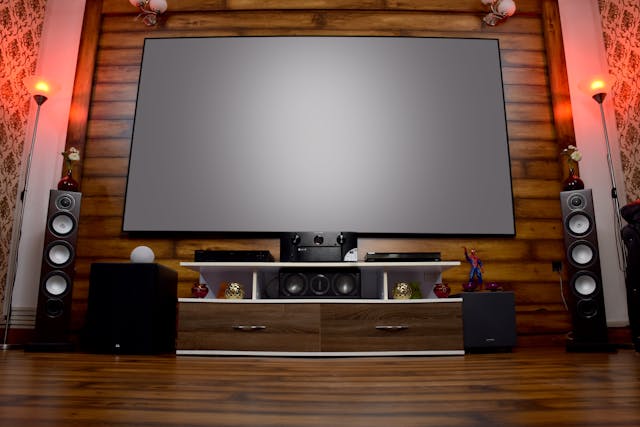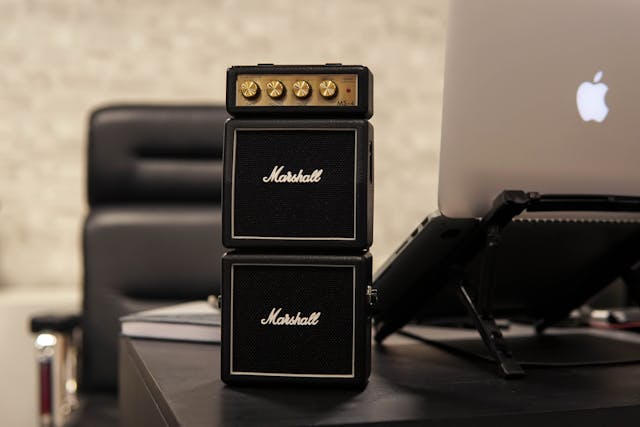The Rise of Home Audio Systems: How to Create the Ultimate Listening Experience
Over the years, home audio systems have evolved from basic speakers to high-tech setups designed to deliver an immersive listening experience. Whether you're a music enthusiast, a movie lover, or a podcast fan, the rise of home audio systems has made it easier than ever to create the perfect soundscape in your own home. The combination of advanced technology, improved design, and better affordability has transformed the way we experience audio, making it a central element of home entertainment.
In this guide, we’ll explore the rise of home audio systems, the key components to consider, and how you can create the ultimate listening experience that suits your needs.

The Evolution of Home Audio Systems
Home audio systems have come a long way from their humble beginnings. From vinyl records played through basic speakers to the high-fidelity, multi-room, and wireless setups of today, technological advancements have greatly improved sound quality, ease of use, and overall versatility.
The Analog Era
In the past, home audio systems were often bulky and had a limited range of sound. Records, cassette players, and compact discs were the primary ways to enjoy music, but these systems didn’t always deliver the best sound quality.
The Digital Revolution
With the rise of digital music formats like MP3, CDs became obsolete, and streaming services began to dominate the way we consume music. This era also saw a shift toward smaller, more powerful audio equipment.
Wireless and Smart Audio Systems
One of the most significant changes in the past decade has been the transition to wireless audio systems. With the development of technologies like Bluetooth, Wi-Fi, and voice assistants, creating a seamless listening experience has become more convenient. Today, users can stream their favorite music from a phone or computer to various speakers throughout the home with minimal effort.
Key Components of a Home Audio System
When creating the ultimate home audio setup, the components you choose will have a significant impact on your experience. Below are the key elements to consider for building a complete system:
Speakers
The heart of any home audio system is the speakers. Whether you’re looking for a simple setup or a full-blown surround sound system, selecting the right speakers is essential to delivering clear, rich sound.
Types of Speakers:
-
Bookshelf Speakers: Compact yet powerful, these are perfect for smaller spaces and can deliver exceptional sound.
-
Floorstanding Speakers: Larger and more powerful, they are ideal for larger rooms or when you want to fill the space with sound.
-
Soundbars: Often used for home theater systems, soundbars are great for enhancing TV audio and can be wall-mounted or placed under the TV.
-
In-Wall or In-Ceiling Speakers: A sleek, discreet option that integrates seamlessly into the room.
-
Wireless Speakers: Offer flexibility and convenience, allowing for easy placement without the need for wires.
Audio Source
The audio source is where the music, podcasts, or movie soundtracks come from. The evolution of audio sources has moved from physical media like vinyl records and CDs to digital streaming services.
Audio Source Options:
-
Streaming Services (Spotify, Apple Music, Tidal): Offering access to millions of songs, podcasts, and more, these platforms are becoming the primary method of music consumption.
-
CD Players or Turntables: For audiophiles or those who appreciate physical formats, a high-quality CD player or turntable can be the centerpiece of your setup.
-
Media Players or Smart Devices: Devices like smart TVs, Blu-ray players, or streaming sticks (like Roku or Chromecast) connect to your system and allow you to access a wide range of audio and visual content.
Amplifiers
Amplifiers are responsible for boosting the audio signal and sending it to the speakers. A good amplifier ensures that your speakers perform at their best, providing power and clarity to the sound.
Types of Amplifiers:
-
Integrated Amplifiers: Combine a preamp and power amplifier into a single unit, ideal for most home audio setups.
-
Separate Preamplifiers and Power Amplifiers: For high-end systems, this combination offers superior sound quality and control.
Subwoofers
A subwoofer is a specialized speaker designed to produce low-frequency sounds (bass). While standard speakers can handle mids and highs, a subwoofer will bring depth and richness to your audio experience, particularly for music genres or movies with heavy bass.
Audio Receivers
An audio receiver is an all-in-one device that combines several components, including an amplifier, tuner, and audio processor, to control your home audio system. Many modern receivers also include Wi-Fi or Bluetooth connectivity, enabling wireless streaming from multiple devices.
Wired vs. Wireless Systems
One of the biggest decisions when setting up a home audio system is whether to go wired or wireless. Both options have their pros and cons, and the right choice depends on your space, budget, and priorities.
Wired Systems
Advantages:
-
Better sound quality: Wired systems typically offer higher sound fidelity with less risk of interference.
-
Reliability: There’s no need to worry about battery life or Wi-Fi connectivity issues.
Disadvantages:
-
Installation can be more complicated: Running cables throughout your home may require drilling holes or hiring a professional.
-
Less flexibility: You’re limited in terms of speaker placement.
Wireless Systems
Advantages:
-
Easy setup: Wireless systems are easy to install, requiring little more than a plug-in and an internet connection.
-
Flexibility: You can place speakers anywhere in the room without worrying about wires.
-
Potential for audio quality loss: Wi-Fi or Bluetooth signals can sometimes result in a slight reduction in sound quality.
-
Connectivity issues: If your Wi-Fi goes down or your Bluetooth connection drops, it can disrupt your experience.

Creating the Ultimate Listening Experience
Now that you understand the essential components and types of systems, here’s how you can create the ultimate listening experience in your home.
Room Layout and Acoustics
The layout of your room plays a significant role in the quality of your sound. To optimize acoustics, consider the following:
-
Speaker Placement: Position speakers at ear level for the best listening experience, and avoid placing them too close to walls, as this can distort the sound.
-
Room Treatment: Consider adding acoustic panels, rugs, and curtains to reduce echoes and improve sound quality.
Multi-Room Audio
For those who want to listen to music throughout their entire home, multi-room audio systems, such as Sonos, allow you to sync speakers across various rooms. This way, you can play the same song everywhere or choose different content for each room.
Integrating Smart Technology
Smart home technology has revolutionized audio systems. Voice-controlled speakers like Amazon Alexa, Google Assistant, and Apple HomePod can seamlessly integrate with your audio system, allowing you to control playback, volume, and even search for songs with just your voice.
Smart Features to Consider:
-
Voice control for hands-free operation.
-
Integration with smart home systems for synchronized control of other devices (lighting, temperature).
-
Streaming capabilities from multiple sources.
Conclusion
Creating the ultimate home audio experience has never been easier or more customizable. Whether you’re building a high-end home theater system, setting up a multi-room audio setup, or upgrading your current speakers, the advancements in technology and audio design offer something for every need and budget.
By carefully selecting the right components—speakers, amplifiers, and source devices—and considering factors like room acoustics and smart technology integration, you can enhance the way you experience music, movies, and everything in between. With the rise of wireless systems and high-quality streaming platforms, the future of home audio looks incredibly exciting, offering limitless opportunities to create your personal soundscape.












